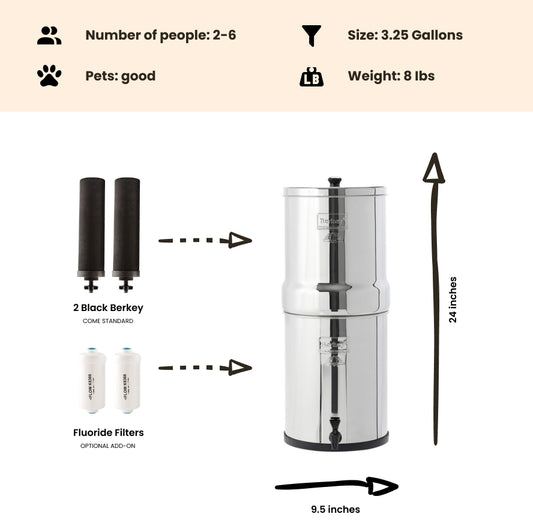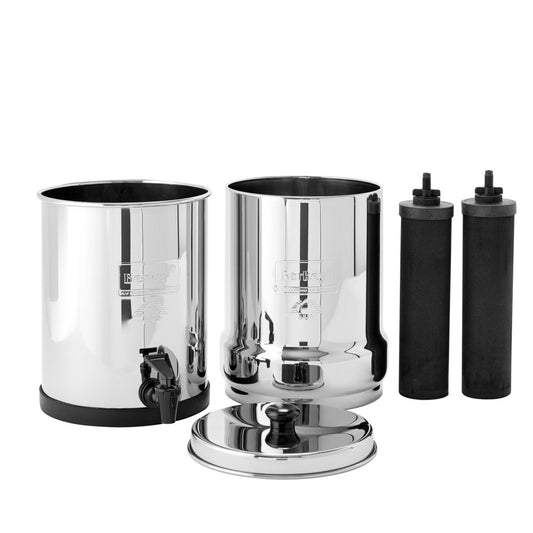
Unregulated Chemicals are Commonly Found in US Drinking Water
By Dan DeBaunShare
According to a report released by Environmental Health News, a recent study of US drinking water utilities across the nation has revealed that traces of 18 chemical contaminants – all of which are currently unregulated – occurred in water samples drawn from more than a third of the nations water utilities. The chemical toxins included eleven perfluorinated chemicals, two solvents, a herbicide, and antibacterial compound, a metal toxin, as well as an anti-depressant and caffeine.
Scientists from the US Geological Survey (USGS) and the US Environmental Protection Agency (EPA) analyzed both treated and untreated water samples drawn from 25 water utilities that voluntarily took part in the assessment. The researchers detected 21 toxins overall, most of which occurred in low concentrations, in drinking water samples obtained from nine or more water utilities. Only three of these contaminants are regulated under the Safe Drinking Water Act, meaning that for the remaining 18 there are no safety limits in place, and utilities do not have to monitor them.
“The good news is the concentrations are generally pretty low,” said Dana Kolpin, a research hydrologist with the USGS who participated in the study. “But there’s still the unknown,” he cautioned. “Are there long-term consequences of low-level exposure to these chemicals?”
In most cases, very little information is available regarding the health risks associated with exposure to low doses of these contaminants. However, PFOA (also known as C8) – a perfluorinated compound detected in the samples – has been associated with a range of health issues, including cancer, in West Virginian communities who have been exposed to the toxin as a result of their drinking water being contaminated by a local chemical plant. The scientist tested for 251 contaminants, including viruses, bacteria, microbes and chemicals; of which 117 were not found in any of the treated water samples. However, water from at least 9 out of the 25 utilities (>33%) tested showed traces of 21 contaminants, while traces of 113 contaminants where found in water samples from eight or less (< 33%) of the water utilities tested.
While research shows that wastewater commonly contains emerging contaminants, little has been reported in terms of which of these persist in drinking water. The EPA currently has four of the toxins detected in the water samples listed on the water contaminant candidate list (CC3): strontium, a heavy metal; metolachlor, a herbicide; and the perfluorinated compounds, PFOA and PFOS.
“We’re hoping through this work the EPA will do a much more intensive contaminant candidate list and develop new methods and requirements for drinking water plants,” said Edward Furlong, a scientist with the USGS who participated in the study.
Studies have shown that both metolachlor and strontium pose serious health risks to humans, including cancer and stunted bone growth respectively. Based on findings related to Ohio-Valley communities whose drinking water was contaminated with PFOA from a local DuPont chemical plant, C8 Probable Link Reports suggest that there PFOA in drinking water is associated with a number of health issues, including high cholesterol, thyroid disease, kidney and testicular cancer, ulcerative colitis and pregnancy-induced hypertension.
PFOS, which was an additive in Scotchgard until being phased out in 2002, is associated with attention deficit/hyperactivity disorder (ADHD) in children and with thyroid health problems in men. The perfluorinated chemical compounds that were most abundant are commonly used in a range of industrial processes, such as in the production of non-stick food packaging and cookware and stain-resistant fabrics. Alarmingly, PFOA and PFOS – two of the most abundant perfluorinated chemical compounds found in drinking water – are also found in the blood of nearly all people living in the US.
The perfluorinated chemical compounds occurred in both the treated and untreated drinking water samples at similar levels, suggesting that water treatment methods do not remove these contaminants successfully. The only plant that successfully removed these contaminants used activated carbon during the water treatment process. According to Susan Glassmeyer, a research chemist with the EPA, activated carbon, UV and ozone are typically better at removing these contaminants from water than chlorine, which is the most common treatment used, however, these methods tend to be prohibitively costly. Update 8/12/16: PFAS's fall under the category of PFC's - Perfluorinated Chemicals. PFOA, PFOS, etc. The Black Berkey elements that come standard with our Berkey systems do reduce these contaminates, to an Extreme Degree (in parts per trillion). Testing to back this up does exist and will be released soon.
“People resent having to pay anything for water,” said Glassmeyer. “There’s the thought that there’s a God-given right to have as much as we want but, if you want the cleanest water, these techniques take money.”
Also, chemical compounds can sometimes be transformed into new compounds during the water treatment process. “Chlorination and other treatments technologies will remove some contaminants, but will react with others,” said Laurel Schaider, a research associate at the Harvard School of Public Health. “Some compounds may appear to be removed but may be transformed to a chemical we know even less about.” A high quality drinking water filter equipped with an can effectively filter out unwanted contaminants to make your water safe to drink.
-
Regular price $234.00 USDRegular priceUnit price / per
-
Regular price $327.00 USDRegular priceUnit price / per
-
Regular price From $367.00 USDRegular priceUnit price / per
-
Regular price From $408.00 USDRegular priceUnit price / per
-
Regular price From $451.00 USDRegular priceUnit price / per
-
Regular price From $478.00 USDRegular priceUnit price / per
-
Regular price $332.50 USDRegular priceUnit price / per
$350.00 USDSale price $332.50 USDSale

Dan DeBaun is the owner and operator of Big Berkey Water Filters. Prior to Berkey, Dan was an asset manager for a major telecommunications company. He graduated from Rutgers with an undergraduate degree in industrial engineering, followed by an MBA in finance from Rutgers as well. Dan enjoys biohacking, exercising, meditation, beach life, and spending time with family and friends.
~ The Owner of Big Berkey Water Filters
















